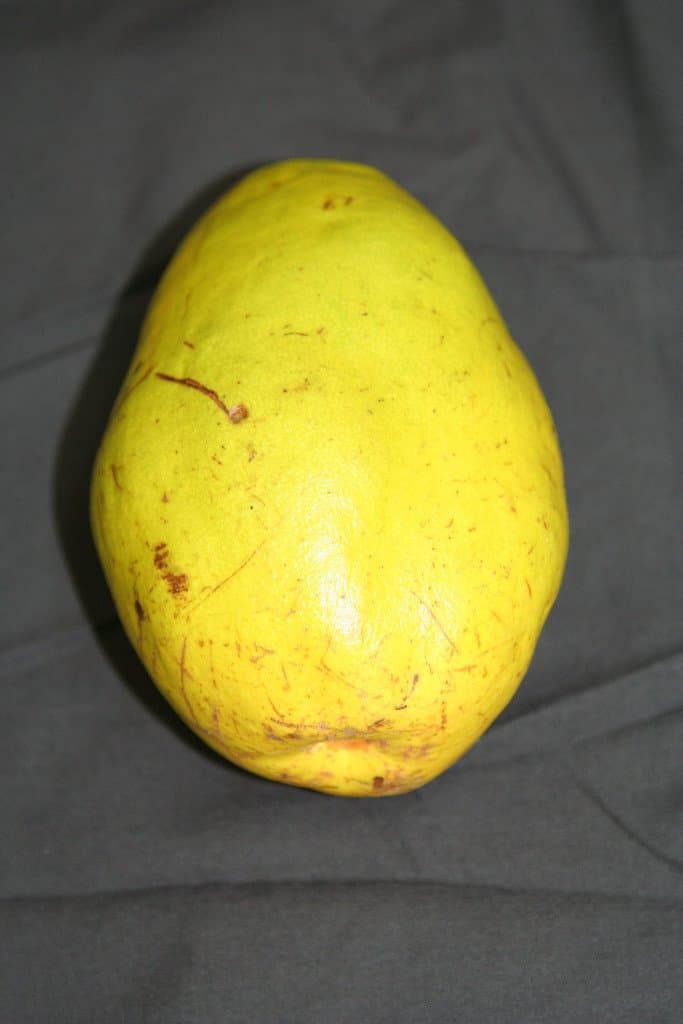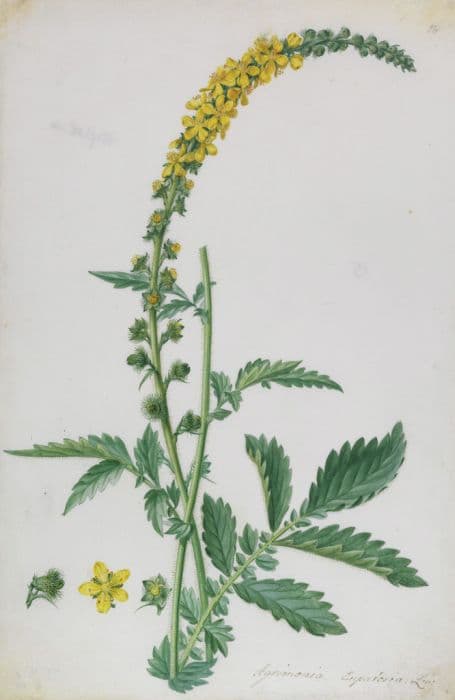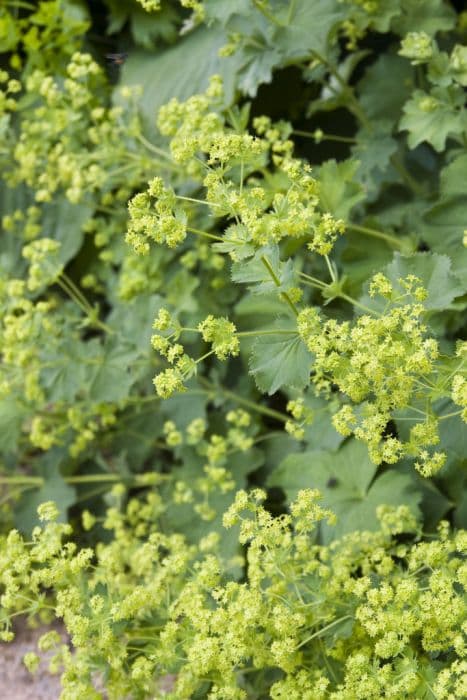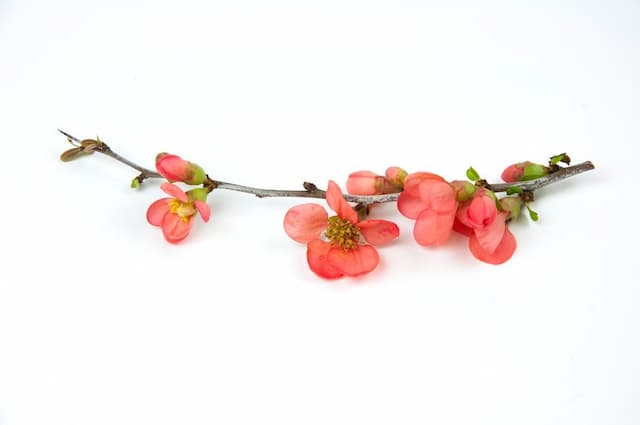Chinese quince Pseudocydonia sinensis

ABOUT
The plant known as the Chinese quince has a distinctive appearance characterized by its striking bark, foliage, and fruit. The bark is unusual, as it peels away in patches to reveal a mosaic of colors underneath, including shades of green, gray, and brown, adding a unique texture to the landscape. The leaves are simple and oval-shaped with finely serrated edges, growing in an alternate pattern along the branches. Their color can be described as a dark glossy green, turning to an eye-catching display of orange, red, or gold in the fall, signaling the changing seasons. In addition, this plant is notable for its fragrant flowers which appear in spring. These blossoms are solitary or arranged in small clusters, usually showcasing a delicate pink or white hue, that adds a soft and inviting touch to the plant's overall appearance. Following the flowering season, it produces rounded to pear-shaped fruits that mature into a rich golden yellow, drawing attention with their substantial size and sometimes exhibiting a slightly ribbed texture. The appearance of the Chinese quince is completed by its somewhat thorny branches, which provide a stark contrast to the smooth surfaces of the leaves and fruit, rounding out the textural interplay that makes this plant a visually interesting species in any setting where it is grown.
About this plant
 Names
NamesFamily
Rosaceae
Synonyms
Chinese Quince, Chinese Flowering Quince, Mu Gua
Common names
Cydonia sinensis, Chaenomeles sinensis.
 Toxicity
ToxicityTo humans
The Chinese quince, Pseudocydonia sinensis, is not commonly known to be toxic to humans. Consequently, there are no well-documented cases or specific symptoms of poisoning associated with the ingestion of the Chinese quince fruit or other parts of the plant. However, as with any plant, individual allergies or sensitivities could potentially cause adverse reactions, and eating large quantities of the seeds may be inadvisable due to the potential presence of compounds like amygdalin. Always exercise caution and consult with a healthcare provider if you suspect an adverse reaction after consuming plant material.
To pets
The Chinese quince, Pseudocydonia sinensis, does not have a known toxicity to pets such as cats and dogs; therefore, it is not typically regarded as poisonous to them. However, the ingestion of any non-food plant material can potentially lead to gastrointestinal upset in pets, including symptoms like vomiting or diarrhea. Always monitor your pet's health and consult with a veterinarian if your pet exhibits any unusual symptoms after ingesting plant matter. It's essential to keep in mind that what is non-toxic for humans might not always be safe for pets, and vice versa.
 Characteristics
CharacteristicsLife cycle
Perennials
Foliage type
Deciduous
Color of leaves
Green
Flower color
Pink
Height
10-20 feet (3-6 meters)
Spread
10-15 feet (3-4.5 meters)
Plant type
Tree
Hardiness zones
6
Native area
China
Benefits
 General Benefits
General Benefits- Ornamental value: The Chinese quince has attractive pink blossoms and a pleasing growth habit, often used in ornamental horticulture and as a bonsai species.
- Fruit production: It produces fragrant, edible fruit that can be used in jams, jellies, and traditional Asian cuisine.
- Drought tolerance: The plant is relatively drought-tolerant once established, requiring minimal watering in suitable climates.
- Cold hardiness: Chinese quince is capable of withstanding cold temperatures, making it suitable for a variety of temperate climates.
- Longevity: This species is known for being long-lived, providing landscape value for many years.
- Wildlife attraction: The flowers provide nectar for pollinators, while the fruit can attract birds and other wildlife to a garden.
 Medical Properties
Medical Properties- Antioxidant: Pseudocydonia sinensis contains compounds that may exhibit antioxidant effects, helping to neutralize free radicals in the body.
- Anti-inflammatory: Some studies suggest that extracts of this plant have anti-inflammatory properties, which could be useful in reducing inflammation.
- Antimicrobial: The plant has been reported to have antimicrobial activity against various pathogens, possibly aiding in the prevention or treatment of infections.
- Anti-diarrheal: Traditionally, it has been used to treat diarrhea, although clinical evidence supporting this use may be limited.
- Gastroprotective: There is some evidence suggesting that Pseudocydonia sinensis may protect the gastric mucosa, which could be beneficial for gastrointestinal health.
- Anticancer potential: Preliminary research indicates that compounds in the plant might have anticancer effects, but this is not confirmed in clinical settings.
 Air-purifying Qualities
Air-purifying QualitiesThis plant is not specifically known for air purifying qualities.
 Other Uses
Other Uses- Woodworking: The dense, hard wood of the Chinese quince is valued for making intricate carvings and furniture details.
- Ornamental use: With its attractive blooms and fruit, the Chinese quince is often planted for decorative purposes in gardens and parks.
- Bonsai art: Enthusiasts of bonsai may use Chinese quince trees for their beautiful flowers and textured bark.
- Perfumery: The fruit of the Chinese quince can be used to make natural fragrances due to its strong, pleasant smell.
- Fabric dye: Historically, parts of the plant may have been used for dying fabrics a range of tones depending on the mordant.
- Insect repellent: The fruit's scent is said to ward off pests, making it a natural insect repellent when placed in closets or drawers.
- Animal fodder: In some places, the leaves and fruit may serve as fodder for livestock during certain times of the year.
- Floral arrangements: Branches of the Chinese quince, with their fruit and leaves, are sometimes used in floral displays for extra texture and interest.
- Culinary aromatizer: Some cuisine practices use the Chinese quince fruit to add a subtle aroma to certain dishes while cooking.
- Photography and art: The vivid blossoms and unique fruit shape make the Chinese quince a sought-after subject for botanical illustration and photography.
Interesting Facts
 Feng Shui
Feng ShuiThe Chinese Quince is not used in Feng Shui practice.
 Zodiac Sign Compitability
Zodiac Sign CompitabilityThe Chinese Quince is not used in astrology practice.
 Plant Symbolism
Plant Symbolism- Resilience and Perseverance: The Chinese quince (Pseudocydonia sinensis) is known for its hardy nature, able to withstand harsh conditions and survive in less than ideal environments. This signifies one's ability to persist through challenges.
- Beauty and Bounty: With its attractive blossom and nutritious fruit, the Chinese quince represents the coming of beauty and the reward of abundance after a period of patience and nurturing.
- Protection: In traditional medicine, parts of the Chinese quince have been used to treat various ailments, symbolizing the plant's protective qualities and its potential to ward off illness.
- Renewal: The cycle of flowering and fruiting can be seen as a metaphor for renewal and the continuous nature of life's cycles.
 Water
WaterThe Chinese quince requires moderate watering. During the growing season, water it thoroughly once a week, allowing the soil to dry out slightly between waterings. In the winter, reduce watering to every other week, providing around 2 gallons each time depending on the size and container of the plant. Overwatering can be harmful, so ensure good drainage to prevent root rot. It is crucial to adjust the watering frequency based on rainfall and changes in temperature and humidity.
 Light
LightThe Chinese quince thrives best in full sun to partial shade. Position it in a spot where it receives at least 6 hours of direct sunlight daily. While it can tolerate some light shade, too much shade may result in fewer blossoms and fruits. Adequate light is crucial for the health and vibrancy of its foliage as well.
 Temperature
TemperatureThe Chinese quince is hardy and can survive in temperatures as low as 5°F. However, it grows best in a temperature range between 60°F and 85°F. To prevent frost damage, protect the plant if temperatures are expected to drop significantly below freezing. Avoid placing the Chinese quince in locations where temperature fluctuations are extreme or where it might be exposed to cold drafts.
 Pruning
PruningPrune the Chinese quince in late winter before new growth begins to remove any dead or diseased wood, to shape the tree, and to improve air circulation. Thinning out crowded branches will also help increase fruit production. Corrective pruning should be done as needed, and for optimal health and structure, pruning can be done annually.
 Cleaning
CleaningAs needed
 Soil
SoilThe Chinese Quince (Pseudocydonia sinensis) thrives in well-draining soil with a mixture of loam, sand, and organic compost. An ideal soil pH for healthy growth is slightly acidic to neutral, ranging from 6.0 to 7.5. To prepare the best soil mix for Chinese Quince, incorporate equal parts garden loam, coarse sand or perlite, and well-rotted compost.
 Repotting
RepottingChinese Quince (Pseudocydonia sinensis) typically requires repotting every two to three years to ensure the root system has enough room to grow. Repot during the late winter or early spring before the onset of new growth.
 Humidity & Misting
Humidity & MistingChinese Quince (Pseudocydonia sinensis) is adaptable to a wide range of humidity levels but overwhelmingly prefers moderate ambient humidity. Ensure that the surrounding air isn't too dry, especially during winter when indoor air can become quite parched.
 Suitable locations
Suitable locationsIndoor
Provide bright light, moderate water, and room to grow.
Outdoor
Plant in full sun, well-draining soil, and shelter from harsh winds.
Hardiness zone
5-9 USDA.
 Life cycle
Life cycleThe Chinese quince, Pseudocydonia sinensis, begins its life cycle when seeds germinate in late winter or early spring. Seedlings grow into juvenile plants with a dense, thorny habit, which after 2-3 years mature into adult trees capable of flowering and fruiting. The flowering stage occurs in early spring, displaying single, pink to red blossoms that are pollinated by insects. Following pollination, the trees set fruit, with the quinces developing through summer and ripening in autumn. The mature fruit, when fallen, can disperse seeds either through animal ingestion and subsequent scat or simple decay, promoting the germination of new plants. This plant may also propagate vegetatively through root suckers, which can mature into new, genetically identical trees.
 Propogation
PropogationPropogation time
Spring to summer
The most popular method of propagation for the Chinese quince, Pseudocydonia sinensis, is by hardwood cuttings. The appropriate time for taking these cuttings is typically in the late fall or winter, when the tree is dormant. One should select healthy, mature stems from the current or previous year's growth and cut segments about 6 to 9 inches (15 to 23 centimeters) long. It is beneficial to make the bottom cut just below a node, as this area contains higher concentrations of rooting hormones. The cuttings should then be treated with a rooting hormone and planted in a well-draining medium, ensuring that several nodes are buried to encourage root development. They require consistent moisture and should be kept in a sheltered location until roots have formed and the cuttings can be transplanted to their final location.









